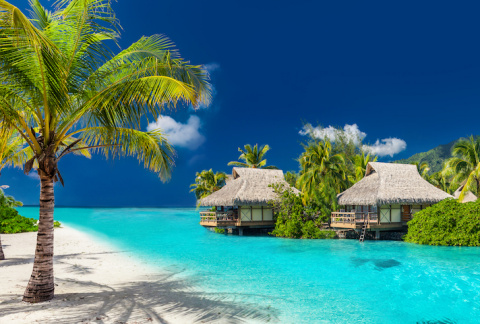
Fiji is known for its dreamy blue sea and white-sand beaches – but it’s the famously friendly Fijian people and their unique culture that make it a world-class holiday destination. Here’s ways you can experience the Fijian culture
Lovo
There’s nothing more Fijian than joining in on the country’s favourite pastime: eating. Often reserved for special occasions, a communal lovo is a traditional cooking method where women prepare the food and men tend to the fire and cooking. Meat, fish and root crops like taro are cooked on white-hot stones in an underground pit covered with leaves and dirt to cook slowly for a few hours. The result is a smoky, succulent feast. Many resorts (and villages) include this method of cooking as a weekly activity that includes traditional singing and dancing.
Firewalkin
One of Fiji’s most fascinating cultural traditions is the firewalking ceremony, practiced only by the descendants of the Sawau tribe of Beqa island. Legend has it that this gift was given to an ancestor who caught and then freed a spirit. Often a rite of passage or a test of courage for young men of the village, the practice and discipline to perform this ceremony has been perfected over the centuries. Outside the Beqa village setting, you can experience the islanders performing this feat at resorts on Beqa Island, around Pacific Harbour and in some parts of the Coral Coast.
Meke (Traditional dance)
Meke is a traditional dance performed by men and women of Fiji to tell stories through song and dance. In general, men demonstrate strong, virile movements, while women are more graceful and feminine. Both groups also sometimes use clubs, spears and fans to emphasize their movements. Most resorts invite a meke group to perform at least once a week but if you miss it, visit the Fiji Culture Village just outside Nadi town.
Kava
Kava is as Fijian as Bula and most resorts across Fiji encourage guests to join in a kava ceremony. Be warned though as it can be an acquired taste and has mild sedative qualities. This earthy drink is made from the dried and pounded root of a type of pepper plant before water is added and the drink is served in a large communal bowl. Kava is consumed both socially and ceremonially in Fiji. If you take part in a village tour, you’ll no doubt take part in a kava ceremony as part of the isevusevu. It is polite to sit cross-legged on the floor, greet your hosts and clap once before and three times after you drink.
Village visit
Nothing will give you an insight into the real Fiji quite like a village visit or homestay where you will witness a communal way of life. Many villages are remote and surrounded by wilderness so you may have to take a 4WD or a boat to get there. A village tour often includes a meke, a kava ceremony and a visit to a school – so you’ll get to do many of Fiji’s main cultural offerings in one go. Many tour operators run daily village tours and do pickups from resorts.
Traditional sailing
Long ago, Fijians used drua – traditional double-hulled canoes – to travel across islands. Some of the finest vessels built in the South Pacific, the drua were traditionally used as war canoes to transport as many as 200 warriors at speeds up to 30kmh to battle. They were fazed out as more modern alternatives came along. The Drua Experience – a replica of the last existing drua – runs sailing itineraries where you can learn stories of ancient seafaring over a bowl of kava, have a turn steering the boat and swim at stops along the way. You can also learn how to sail a smaller version of these traditional sailing boats at Leleuvia Island Resort, off Viti Levu’s east coast.
Bilibili
In addition to being master navigators and sailors, many Fijians know a thing or two about getting down rivers too. Villagers in the interior of Fiji’s larger islands use a raft called a bilibili made of bamboo poles lashed together with traditional rope and steered by a long bamboo pole to carry produce or go fishing. You can ride one down the Navua River near Pacific Harbour with Discover Fiji or learn to make one at the Namosi Eco Retreat in the interior of Viti Levu.
Bobo
If you’re looking to pamper yourself with some spa therapy in Fiji, the traditional deep tissue ‘Bobo’ (massage) is one treatment you simply can’t miss. ‘Bobo’ is a traditional massage technique used to relax or heal specific aches and pains. Using local oils to knead the most stubborn knots, your masseuse will apply a series of long, firm strokes with their fingertips, forearms, and elbows to stimulate circulation, release tension, and relax your muscles. Combine this hour-long massage with a nourishing facial for the ultimate indulgence.
